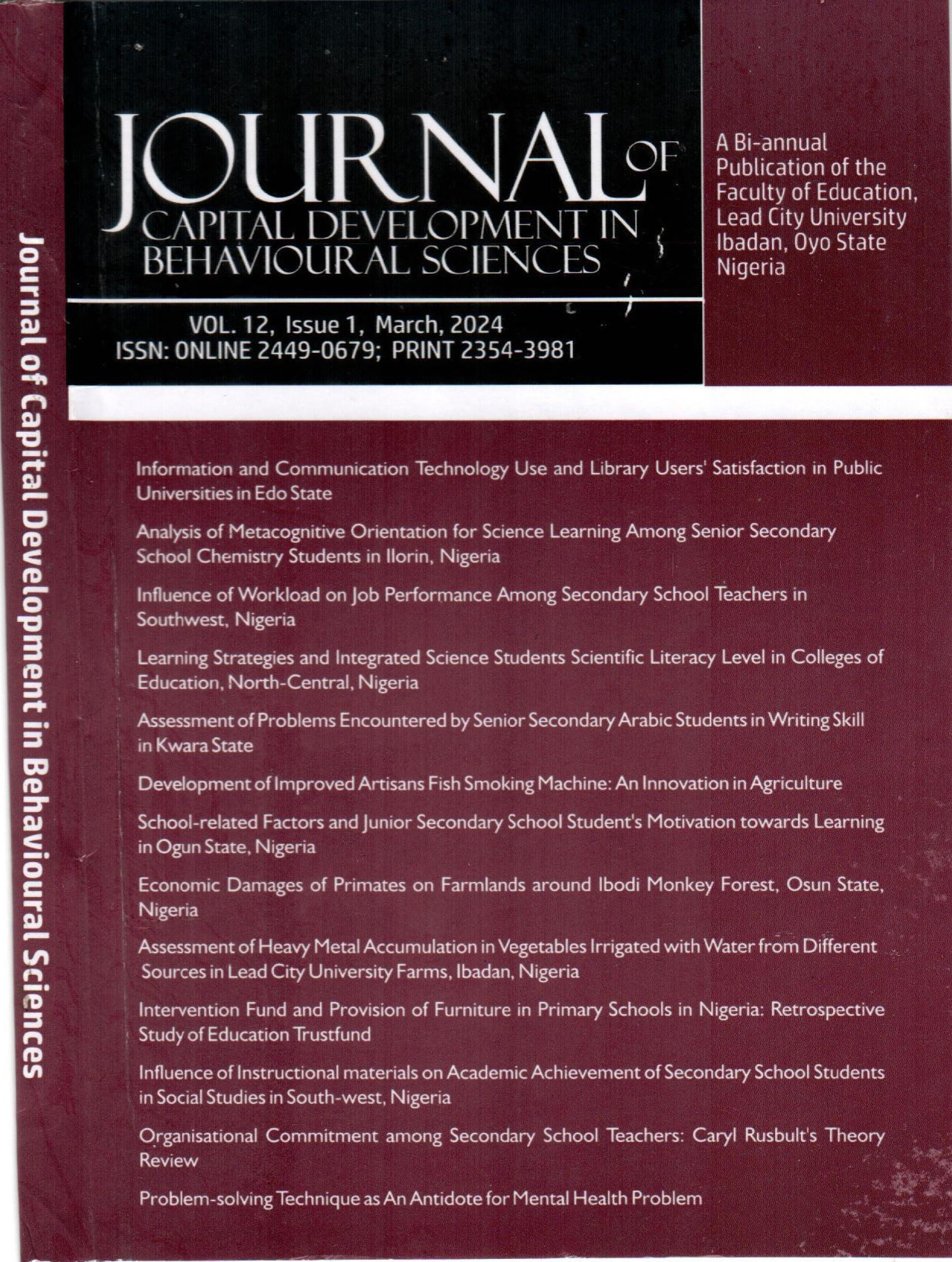Assessment of Heavy Metal Accumulation in Vegetables Irrigated with Water from Different Sources in Lead City University Farms, Ibadan, Nigeria
Keywords:
: Leafy vegetables, Phyto-remediation, Metals, Toxicity, and Waste waterAbstract
Rapid and unorganised industrialisation and urbanisation has contributed to the elevated levels of metals in the urban environment in developing countries, with attendant effect on the health and wellbeing of final consumers of such agro-products. This study was conducted to assess the amount of heavy metal accumulated by selected tropical leafyvegetablesirrigatedwith waste-water
from different sources; poultry waste water, Kitchen waste water and borehole water as control. The sampled vegetables used were Amaranthus hybridus, Telfaria occidentalis and Corchorus olitorus. The vegetables were grown for a period of six weeksin the screen-house of the LCU farms, Lead City University, Ibadan Oyo State, Nigeria. The vegetables were irrigated with the different
water sources, after which the vegetable leaves were harvested and taken to the Microbiology laboratory. Elemental analysis of the vegetables was determined using the Atomic Absorption Spectro-photometer(AAS) and pH level ofthe soil and irrigation
water was assessed. The results indicated the elemental composition of the Bore-Hole Water (BHW) as (Cu=0mg/kg), (Pb=0mg/kg), (Fe=0.018 mg/kg), (Zn=0.038mg/kg) and (Mn=0.0026mg/kg); Kitchen- W a s te water (KWW) was (Cu=0178mg/kg), (Pb=0.035mg/kg), (Fe=0.023mg/kg), (Zn=0.025mg/kg) and(Mn=0.0031mg/kg) Poultry- Sewage water (PSW) is (Cu=0.029mg/kg), (Pb=0.048mg/kg), (Fe=0.0547mg/kg), (Zn=0.147mg/kg) and (Mn=0.0033mg/kg). PSW had the highest composition of heavy metals; comparing the vegetables, C. olitorius accumulated more Iron(Fe), Lead(Pb) and Copper(Cu), while T. occidentalis accumulated more Zinc (Zn) and Manganese (Mn) than A. hybridus. PSW contained substantial amount of heavy metals varying according to source while Corchorus olitorus and Telfaria occidentalis showed a high affinity for accumulation of heavy metals

